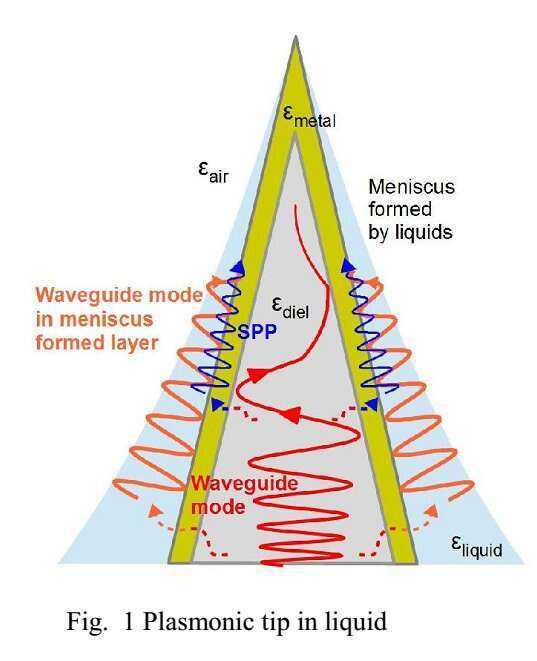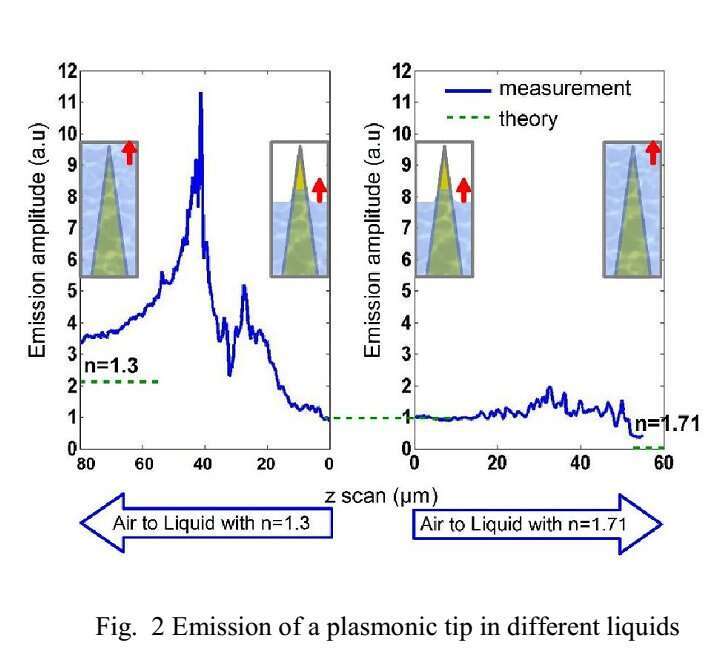
Probing Plasmon Excitation in a Plasmonic Tip Immersed in Liquids
The Scanning Near-Field Optical Mircroscopy (SNOM) is a vital tool to study nanoparticles and plasmonic structures. Though many studies get published continuously on the field, the SNOM tip behavior in liquids is the least studied despite its great potential in applications such as nanoscopic optical tweezing and chemical, seismic, and environmental sensing. With the resonantly excited and localized SPP (Surface Plasmon Polariton) at the apex of the tip, a plasmonic tip or a fully-coated and tapered M-profile fiber can perform superiorly over other types of SNOM tips. Owing to the SPP characteristic, especially its high sensitivity to the surrounding media, the plasmonic tip promises to be a great tool in both surrounding media sensing and optical trapping applications.
As a first step towards the multifunctional plasmonic tip, we explored the behavior of the plasmonic tip emission in a liquid environment where different processes happen due to liquid wetting effect (Fig. 1). To detect or excite a local sample, the plasmonic tip, as the name stated, exploits the localized SPP at the apex which originates from a radially polarized waveguide mode within the M-profile fiber. The resonant excitation of the SPP from the waveguide mode reacts sensitively to the change of the environment so that with the increase of surrounding media refractive index, the resonant excitation amplitude grows so does the localized field amplitude at the tip apex as long as the phase matching holds (Fig. 2). However, the emission of the tip damps as soon as the tip inters a liquid with higher refractive index where the phase matching condition is no longer fulfilled.
norik.janunts@uni-jena.de


Powered by Eventact EMS